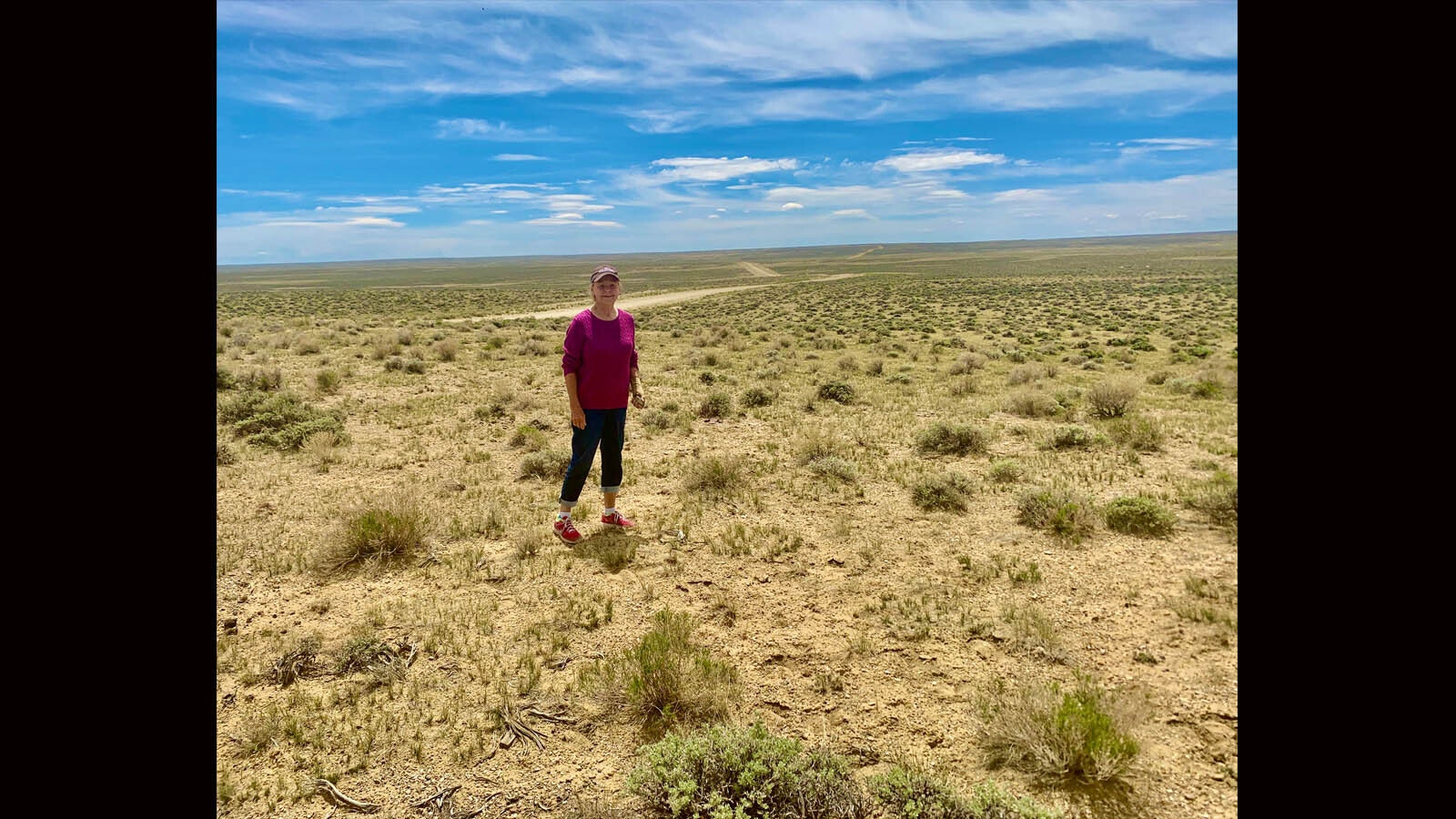By Bill Sniffin, publisher
I love the Red Desert. And you will, too.
The ghosts of longtime friends Jimmy Smail and Bill Crump were hovering over us as Nancy and I made our first trek in three years to the vast Red Desert south of Lander and north of Rock Springs and Rawlins.
This gigantic place will devour you. It is so big and stretches out so far in all directions. I had forgotten how deep it is. That’s right, the word “deep” comes to mind as you venture farther and farther into it.
Much like a vast dark jungle, this huge swath of open space just takes over. It stretches from one horizon to the other. It is like being in the middle of the ocean.
I remarked to Nancy how native peoples roamed this area for 12,000 years. And for all but about the last 350 years, they did it on foot!
From South Pass, you travel south for 10 miles to the magnificent Oregon Buttes. They are so named because when the Oregon Trail emigrants reached these buttes on South Pass, it meant they were entering the state of Oregon. They stand tall next to Continental Peak and are major landmarks in the north portion of the Red Desert. We love the buttes.
The area is known as a place to find Eden Valley petrified wood. In our early years in Wyoming, we hauled our share of the beautiful wood home. Now removing the wood is prohibited.
Southeast of Oregon Buttes we pass through the Honeycomb Buttes country and then come to a T-intersection. If you go right, you see all the sights. If you go left, you literally drop off the end of the world. You feel like you are Columbus sailing off into the vast horizon. We turned left. As we ventured deeper into this gigantic basin, you just feel overwhelmed by the distances. There were few landmarks. Just emptiness all around you.
The roads are well maintained and most cars would do fine, but I would recommend an SUV or pickup.
We stopped once and I found a survey marker indicating the border of Sweetwater County and Carbon County. Also photographed a tiny horned toad.
There were lots of wild horses roaming the area. Stallions had clearly marked their territory with piles of road apples in the road at strategic locations.
This area is considered the largest unfenced region in the United States. It also is a place where the Continental Divide splits, going east and west and creating a basin. Water entering this basin does not leave.
After 90 minutes of experiencing this loneliest place in the loneliest state, we turned west and headed back to see the sights. We could see two buttes off in the distance and knew that the Killpecker Sand Dunes and the Boar’s Tusk were on the other side of them.
The sand dunes were busy. Lots of folks camping over the Memorial Day weekend and lots of expensive ORVs (off-road vehicles) roaming around. We visited with Jose Perez of Rock Springs and took a photo of him and his daughter. He said his rig would go 80 miles an hour. Wow!
We love the Boar’s Tusk. This rock formation can be seen for a long distance all around. You can almost see it from Rock Springs.
Just south of there is one of the state’s best petroglyph sites at White Mountain. These are ancient rock carvings created by native peoples centuries ago. There are even rocks believed to be “birthing rocks,” into which handholds have been carved. Women over a millennia would grip these when having babies.
The area is sheltered from that perennial western wind that occurs in this part of the state and was probably a wintering site for indigenous peoples.
The site is well marked, well maintained and well worth the short hike.
It was over 50 years ago that a game warden named Bill Crump introduced me to the desert. Bill died last September at the age of 95. On Memorial Day, the city of Lander named the day in his honor. At 6 feet, 5 inches, he may have been the tallest sailor in the history of the Submarine service in World War II.
What a wonderful happenstance to have had a brilliant outdoorsman like Bill introduce me to the desert. I am so grateful for that.
In recent years, my late friend Jimmy Smail showed me all sorts of secret places in the desert. Jimmy died at 82 in February.
I could feel good vibes from both of these wonderful Wyoming icons while we were tooling around in their favorite place – the vast Red Desert.










